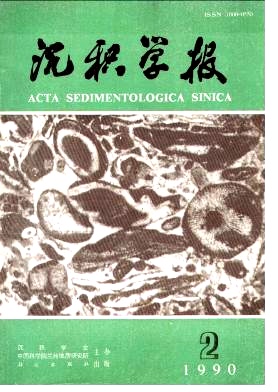LACUSTRINE ENVIRONMENTAL AND CLIMATIC EVOLUTION RECORDED BY ISOTOPE OF INORCANIC CARBON AND OXYGEN
- Received Date: 1989-09-01
- Publish Date: 1990-06-10
Abstract: Based on the analogical method on studying Paleotemperature and Palecoclimate with foraminiferal isotope in marine sediments, the features of carbon and oxygen isotopic compositon in lacustrine shell fossils from (he wells of Kunming Basin, Taihu lake and Chaidamu Basin with their climatic and enrironmental signiticance have been reported for the first time in this paper.By arialysising isotopic compositions of about one hundred shell fossils in different terrestrial environments, some regularities are found by comparing them with as follows:(1) Change of oxygen isotopic light and heavy composition in marine and terrestrial shell fossils is similar and show a period over 100, 000years.This that global climatic change is synchronows.(2) Change of oxygen isotopic composition of marine shell, utmost of which is 3‰ , if not considering evolution of sea water and seasonal temperature change, is cheifly controlled by annually average temperature. As temperature has a change of 4.2℃ , isotope has a change of 1‰, However oxygen isotopic composition of terrestrial shell, is not only influenced by temperature, but mainly by oxygen isotopic composition of pricipitation and evaportion. That is, temperature, change of 1℃ causes isotopic change of 1‰.(3) In the same section, isotopic compositions of terrestral shells with different age change quite. δ18O difference of total shell is more than 7‰, and δ13C is about 5‰.For Kunming Basin, authors set up a climatic curve of oxygen isotope, chiefly based on data of this experiment and referencing paleomagntic dating, uranrum dating and ,14C dating measuredl by others. This curve coincides with oxygen isotopic curve of deep sea foraminifera and paleoclimatic curve of loess paleosoil sesimentary system. Late Wurm glacial epoch (200, 000-100, 000 YBP) is period to accumulate most violently heavy isotopic composition (δ18O = -3.5‰-7.5‰, δ13C = -3.5‰) which implies that this period was the coldest and driest in Kunming basin. This result has been suppoted by data of sedimentary rock and palaeontology. The Period of the most violent accumulation of light isotopic composition was 500, 000- 600, 000 YBP (δ18O=-14.6‰, δ13C=-8.3‰) and it is deduced that preicipiation of this period was 150mm-200mm / Y more than that of moder time. Isotope of shell fossils distributed in 10 meters thickness of lacustrine silt clay under the base of Taihu lake is abundant with lighter compositim (δ18O = 7. 1‰-8.4‰) .and it is suggested that sediment was deposited during Wurm subinterglacial epoch (400, 000-200, 000 YBP) and was in estuary environment of restricted marine.Isotopic composition of Holcence shell show that the transgression did not reach Taihu lake.
| Citation: | Li Yucheng, Xu Yongchang, Shen Ping. LACUSTRINE ENVIRONMENTAL AND CLIMATIC EVOLUTION RECORDED BY ISOTOPE OF INORCANIC CARBON AND OXYGEN[J]. Acta Sedimentologica Sinica, 1990, 8(2): 105-112. |






 DownLoad:
DownLoad: